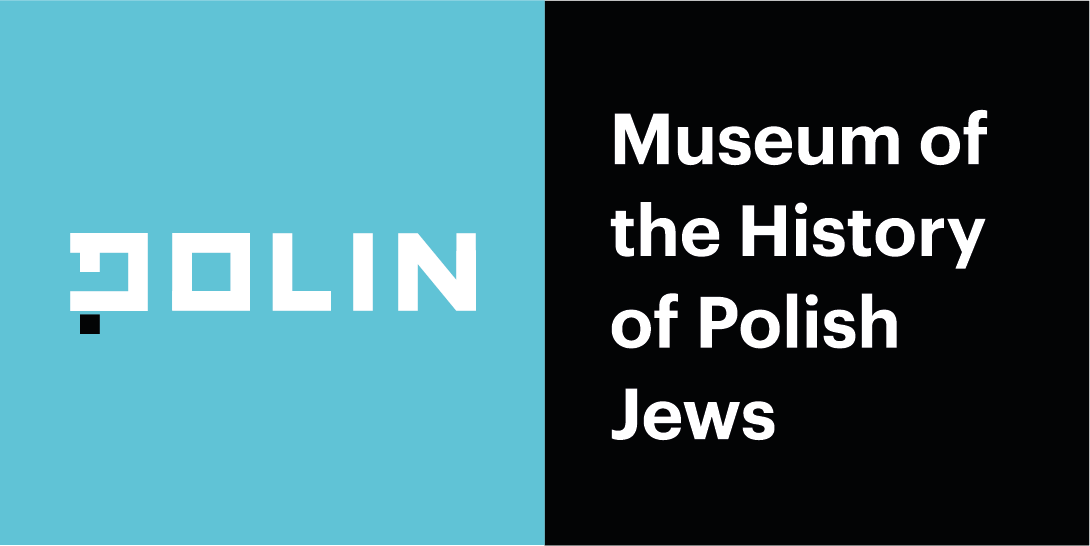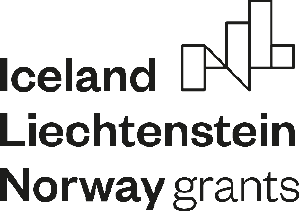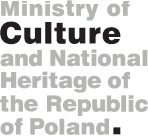The first remark on Jews living in Płońsk dates back to 1448. In 1507, the Jewish inhabitants paid 5 zlotys of coronation tax[1.1]. In 1578 the local Jewish kahal had 24 taxpayers.
In the 17th century the first synagogue and a cemetery were raised in town. However, the Jewish community in Płońsk was subordinated to the kahal in Ciechanów until the middle of the 18th century.
The principles of Jewish-Polish coexistence were formally regulated in 1768 by a special agreement. From 1768 to 1777 the town council allowed Jewish people to trade, produce mead and sell spirits. In 1765 the Jewish community owned 20 houses.
At the beginning of the 19th century, Shlomo Zalman Posner established in and around Płońsk a unique program of Jewish agricultural settlement. In 1831, 298 out of 502, who lived in the village Kuchary, worked in cotton mill owned by Posner; however, the project collapsed and the former workers returned to the town[1.2].
In 1816 the first plan to establish a Jewish district for 172 families was issued. However, there was a fire in the town in 1926, as a result of which many buildings burnt down and a number of Jewish families were left homeless. Establishing one Jewish district was then considered purposeless from the practical point of view. The inhabitants of Płońsk were mostly Jews, who owned squares and houses around the whole town. Jews were only recommended not to build nor buy houses neighboring to the Polish ones. In 1827, the town authorities built 50 barracks for the families, who lost their shelters due to the fire. 50 families settled in there. Until 1844 only some of them managed to move to new houses. The remaining ones were still crowding in the barracks, notwithstanding pressures of the town authorities.
The main source of income for Jews in Płońsk was still trade. In 1844 Hersz Senior, Josef Fenkiel, Mosiek Bornsztejn and Abe Cemach were the ones who traded on a large scale. The first one traded in kosher meat and foreign alcohol; the remaining three traded in Polish goods sold in ells. Twelve stall owners were in charge of small trade. Owners of taverns and tenants of various town fees also belonged to the wealthy town Jewry.
In 1819, 28 out of 32 taverns in Płońsk belonged to Jews. One of the wealthiest Jews was Gotfryd Bittner, who owned two taverns. The local financial elite included also taproom landlords. In Płońsk, these were Hersz Sztucki from Ostrołęka, Joachim Goldm from Zakroczym and Nuchim Rubinstein from Pułtusk. In the years 1828–1830 the incomes from taproom tenancy in the amount of 7,715 zloties went to Lejzer Cohn. Minor profits were provided by tenancy of the bridge fee. Salomon Szytkie dealt with the bridge fee tenancy in the period of 1819-1821. He soon began to lease the market fee. In the 1880s Zelman Blum leased incomes from the town treasury obtained from the fair fee and the market fee. Maskeil Rozen was in charge of the slaughterhouse income. Another important activity, apart from trade, was craft. The Jews in Płońsk specialized in tailoring.
The most well-known rabbis of Płońsk were: Baruch Harif (died 1792), Abraham Jekutiel Lichtenstein (died 1810), Cwi Jeheskiel Michaelson (1894–1922 in ministry) and Izrael Bronstein (since 1922)[1.1.2].
In the period of 1861-1864 Jews from Sochocin caused some confusion in the community as they strived to become an independent kahal. They were supported by the mayor of Sochocin. The land owner Dawid Pozner and the Jewish colonists who settled in the villages Kuchary and Kadłubówka opposed to such a move. Eventually, the authorities of the Płońsk Governorate admitted independence of the Jewish community in Sochocin in 1865.
A permanent accusation for corruption and financial abuse influenced the work of the community board in the first half of the 19th century. Corruption was possible because the board members came from 3 families for the period of 30 years. They were said to overvalue financial losses suffered during the Polish-Russian war in 1830-1831, to swindle compensations from the government and to squander money obtained for the construction of a synagogue (the old one burnt down in 1826). The new building was raised on the same place on the eve of the November Uprising (1830-1831). Its size was 22x18 m, and it was 9 m high. The roof was made of Dutch tiles.
In January 1882 a pogrom prepared in Płońsk was fortunately prepared, despite some anti-Semitic behaviours, inflamed the Russian authorities. However, the wave of hatred was not suppressed for long. The anti-Semitic incidents occurred on 28 April 1882.
In the 19th century some conflicts between Chassidic followers and traditional Judaism believers took place among the Jewish population of Płońsk. The maskilim were there since 1840s. They supported assimilation and learnt Polish. Towards the end of 19th century, the position of Chassidim was strengthened because of the activity of Jechiel Meir of Gostyń. However, the movements from Góra Kalwaria, Aleksandrów Łódzki and Ciechanów had also their followers in the town[1.3]. Many religious schools and cheders, like Talmud Torah, were present at that time in Płońsk.
From the turn of the 19th and 20th centuries, the community dispersed even more. Supporters of leftist ideology and Zionism followers turned out there. The Zionists started to play an important role in the 1880s. The leader of the movement was Awigdor Grin, father of Ben-Gurion [1.4]. Diversity of political views was visible in the multiplicity of Jewish organizations, whose founders followed various ideologies.
In 1910, there were 7,665 Jewish inhabitants out of 11,600 in total, which constituted 65.6% of the citizenship. During the following years, the number of Jewish and Christian inhabitants in town decreased. The reasons for that were a wave of emigrations to other towns and even abroad (e.g. the USA), as well as the unrest caused by the World War I. At this point it is worth mentioning the name of Dawid Ben Gurion, who was born in Płońsk but emigrated to Palestine in 1906.
During the population census, which took place in 1921, 4,460 people (48,4%) out of 9,220 all inhabitants of the town declared the Jewish descent. During the interwar period, the economic crisis had a negative impact on the community. Besides, many people died of typhus after the World War I. The American Jewish Joint Distribution Committee and Zionism charities helped the victims. In 1928, a pioneer camp of HeHalutz organization and a Hebrew school were established there. Agudat also took care of education, as it founded a Beit Yaakov school for 150 girls. In 1930s, some anti-Semitic were taken, e.g. economic boycott and violence. In 1931, there were 4,913 Jews in Płońsk[1.1.3].
After the Germans had occupied Płońsk on September 5, 1939, groups of Jews were deported to labor camps in Nosarzew and Sierpc. Soon the Job Office was established in town, led by Abraham Ceve. The institution was transformed after some time into the Jewish Arbeitsamt. Also the Committee for Support of the Poor Jews in Płońsk was established. After its dissolution in 1940, a six-member Judenrat was established. It consisted of Szlomo Bogata, Szloma Fuks, Jankiel Gryc, Ruben Grodowicz, Jakub Ramek – president, and Froim Leon – secretary. The Arbeitsamt was headed by Szlomo Fuks, and the Jewish police – by Lewin. During that time, a monumental synagogue was destroyed by Germans and then turned into an egg warehouse.
In September 1940, a ghetto was established on the area of ca. 1 km2. It embraced the following streets: Kozia, Krzywa, Pułtuska, Warszawska and Wyszogrodzka. At first, it was an open district, but it was later fenced. In 1940 the total number of people deported to the ghetto amounted to 3,800, in 1941 – 1,500, in 1942 – ca. 1,000. Eventually, ca. 12,000 people were placed there. These were not only Jews from Płońsk, but also people deported from numerous towns of the county of Płock, the county of Sierpc, and several towns from the counties of Rypin, Sierpc and Lipno lying in the Province Gdansk Western-Prussia (Dobrzyń nad Wisłą, Dobrzyń nad Drwęcą, Lipno, Rypin, Sierpc). Also people from the ghetto in Nowe Miasto, which was dissolved on 18 November 1942, were deported to the Płońsk ghetto. On 13 July 1941 the Germans selected ca. 1,200 people and sent them to the camp in Pomiechówek. Soon, a typhus epidemic broke out in the ghetto. Every day about. 60 people died of the disease. The Judenrat president managed to invite a German doctor from Warsaw. They established a ghetto hospital, a bath for the ill, a pharmacy and a common eating-house. A female teacher, Grynberg, ran an orphanage for 40 children, aged from 4 to 10.
The ghetto in Płońsk was dissolved in the second half of 1942. The first transport, on 28 October 1942, went to Auschwitz. Another one left Płońsk on 15 December 1942. The ghetto buildings were demolished [1.5].
Bibliography
- Grynberg M., Żydzi w rejencji ciechanowskiej 1939–1942, Warszawa 1984.
- Guldon Z., Skupiska żydowskie w miastach polskich w XV–XVI wieku, [in:] Żydzi i judaizm we współczesnych badaniach polskich, red. K. Pilarczyk, S. Gąsiorowski, vol. 2, Kraków 2000.
- Plonsk, [in:] The Encyclopedia of Jewish Life before and during the Holocaust, vol. 2, ed. Sh. Spector, G. Wigoder, New York 2001, p. 1002–1004.
- Sefer Plonsk we-ha-sewiwa, ed. Sh. Zemah, Tel Aviw 1963.
- Szczepański J., Społeczność żydowska Mazowsza w XIX–XX wieku, Pułtusk 2005.
- [1.1] Guldon, Zenon Skupiska żydowskie w miastach polskich w XV – XVI wieku, [in:] Żydzi i judaizm we współczesnych badaniach polskich, vol. 2, ed. Pilarczyk, Krzysztof and Gąsiorowski, Stefan, Kraków 2000, Annex, p. 24
- [1.2] Plonsk, [in:] The Encyclopedia of Jewish Life before and during the Holocaust, vol. 2, ed. Sh. Spector, G. Wigoder, New York 2001, p. 1002–1004.
- [1.1.2] Plonsk, [in:] The Encyclopedia of Jewish Life before and during the Holocaust, vol. 2, ed. Sh. Spector, G. Wigoder, New York 2001, p. 1002–1004.
- [1.3] Plonsk, [in:] The Encyclopedia of Jewish Life before and during the Holocaust, vol. 2, ed. Sh. Spector, G. Wigoder, New York 2001, p. 1002–1004.
- [1.4] Plonsk, [in:] The Encyclopedia of Jewish Life before and during the Holocaust, vol. 2, red. Sh. Spector, G. Wigoder, New York 2001, p. 1002–1004.
- [1.1.3] Plonsk, [in:] The Encyclopedia of Jewish Life before and during the Holocaust, vol. 2, ed. Sh. Spector, G. Wigoder, New York 2001, p. 1002–1004.
- [1.5] Grynberg M., Żydzi w rejencji ciechanowskiej 1939–1942, Warszawa 1984; Szczepański J., Społeczność żydowska Mazowsza w XIX–XX wieku, Pułtusk 2005, p. 421–426.






